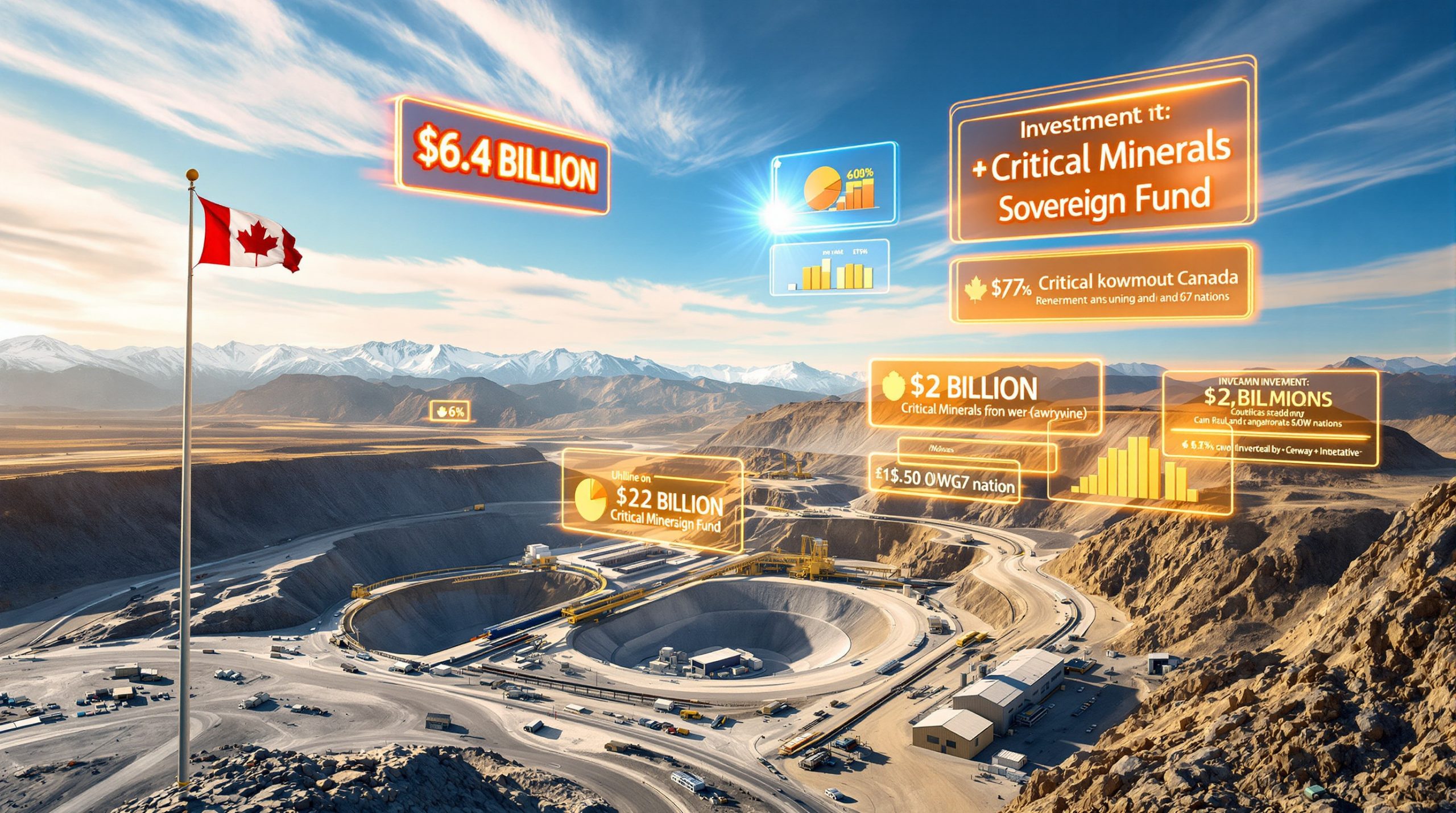Understanding the Lithium Market: Current Trends and Future Outlook
The lithium market continues to evolve rapidly, shaped by the global energy transition and technological innovation. This comprehensive analysis examines current trends, supply-demand dynamics, and the future lithium market outlook through 2030 and beyond.
What is driving the lithium market in 2025?
The lithium market in 2025 is primarily propelled by the accelerating global shift toward electrification across multiple sectors. This transformation represents a fundamental restructuring of energy systems rather than a temporary trend, creating sustained demand despite recent price volatility.
At the forefront of this demand surge is the electric vehicle (EV) industry, which has matured significantly. Global EV sales are projected to exceed 20 million units in 2025, representing over 25% of all vehicles sold worldwide—a remarkable achievement considering EVs accounted for less than 10% of the global market just a few years ago.
Beyond transportation, renewable energy storage deployment continues to expand as grid operators and utilities seek to balance intermittent generation sources. The increasing integration of wind and solar power necessitates large-scale battery installations, further driving lithium consumption.
Consumer electronics maintain steady demand growth, while industrial applications for lithium compounds continue to diversify, creating multiple demand channels that collectively support market fundamentals despite periodic supply imbalances.
How has lithium supply evolved in recent years?
Global lithium production capacity has undergone dramatic expansion over the past three years. Production volumes increased from approximately 737,000 tonnes in 2022 to nearly 1.2 million tonnes in 2024—a 63% increase in just two years. This rapid capacity growth temporarily outpaced demand, resulting in market surpluses of around 175,000 tonnes in 2023 and 154,000 tonnes in 2024.
However, 2025 has witnessed a notable shift in market dynamics as producers have adjusted output in response to pricing pressures, while demand has continued its upward trajectory. The market balance is now tightening, potentially signaling a transition toward more balanced conditions.
Global Lithium Production Growth
| Year | Production (tonnes) | Market Balance (tonnes) |
|---|---|---|
| 2022 | 737,000 | Slight deficit |
| 2023 | ~950,000 | +175,000 (surplus) |
| 2024 | ~1,200,000 | +154,000 (surplus) |
| 2025 | ~1,300,000 (est.) | Tightening |
This evolution reflects the typical resource commodity cycle, where price signals drive investment decisions that subsequently influence supply-demand balances. The significant capacity additions from 2022-2024 were largely initiated during the previous price boom, creating the conditions for the subsequent correction.
What factors are influencing lithium prices in 2025?
Lithium prices have experienced substantial volatility over the past few years, declining significantly from their 2022 peak levels. Current spodumene concentrate prices hover around $840 per tonne, reflecting a multi-year low point following the market correction.
Several key factors are currently influencing price dynamics:
- Strategic production adjustments: Major producers have implemented selective output reductions to bring the market back into balance
- Project deferrals: Numerous expansion plans and greenfield developments have been postponed due to challenging economics
- Permitting delays: Particularly in China, where regulatory approvals for new mines have faced temporary suspensions
- Cost optimization focus: Producers across the supply chain have prioritized efficiency improvements over volume growth
- Inventory drawdowns: The industry is working through accumulated stockpiles before substantial new buying emerges
Financial institutions have begun revising their outlook, with UBS recently upgrading price forecasts after a prolonged bearish stance. Their projections now indicate spodumene prices reaching $835 per tonne in 2026 and $1,100 by 2027—suggesting a recovery is anticipated, though not immediately returning to previous peak levels.
These adjustments highlight the complexity of market timing and the challenges of balancing long-term structural growth with short-term supply-demand fluctuations.
How are lithium equities performing relative to commodity prices?
An interesting divergence has emerged between lithium equity valuations and underlying commodity prices in 2025. While spodumene prices remain near multi-year lows around $840 per tonne, lithium stocks have surged significantly, with many doubling in value since June.
This disparity suggests investors are looking beyond current market conditions to position for an anticipated recovery. According to market analysis, current equity valuations effectively price in spodumene at $1,130-$1,230 per tonne—significantly above current spot rates and even exceeding UBS's 2027 forecast of $1,100.
This forward-looking stance has created potential risks for investors, as reflected in recent analyst recommendations:
- Pilbara Minerals: Downgraded to Sell with a target price of $2.25, following a nearly 100% share price increase since June
- IGO: Maintained at Neutral despite operational challenges, with valuation considered more reasonable relative to peers
- Liontown Resources: Rated Sell despite completing an equity raise to strengthen its financial position
- Patriot Battery Metals: Maintained as a Buy recommendation for investors seeking longer-term exposure
The apparent disconnect between current commodity fundamentals and equity valuations underscores the importance of timing and careful company selection in the sector.
What is the demand outlook for lithium through 2030?
Lithium demand is projected to grow at a compound annual rate of approximately 12% through 2030, creating substantial requirements for new supply. This growth trajectory is driven by several converging factors:
- Electric vehicle proliferation: Automotive manufacturers continue to expand EV model ranges and production capacity, with many committing to full electrification by 2030-2035
- Battery technology evolution: While energy density improvements may reduce lithium intensity per unit, the overall volume growth more than offsets these efficiency gains
- Grid storage expansion: Utility-scale battery deployments are accelerating as renewable energy penetration increases
- Industrial diversification: New applications continue to emerge across various sectors
The International Energy Agency projects lithium demand increasing five-fold by 2040 compared to 2021 levels. Even under more conservative policy assumptions, demand is expected to more than triple over this period.
This robust growth outlook provides structural support for the market, though timing mismatches between supply and demand will likely continue to create cyclical price movements within the broader uptrend.
How is the global lithium market expected to grow financially?
The financial scale of the global lithium market is expanding substantially, with the market valued at approximately $28 billion in 2024. Industry projections indicate robust growth ahead:
- Near-term growth: CAGR of 18-19% expected from 2025 through 2030
- Market value milestones: Projected to reach $75 billion by 2030
- Long-term potential: Possibility of expanding to $155 billion by 2035 under favorable conditions
The Asia-Pacific region currently dominates market revenue, accounting for nearly 50% of the global total, driven by China's leadership in battery manufacturing and electric vehicle production. However, geographic diversification is increasing as new production centers emerge.
Traditional producing countries like Australia, Chile, and Argentina continue expanding output, while emerging producers such as Zimbabwe and various African nations are increasing their market share. North American and European projects are advancing toward production, supported by government initiatives to secure critical mineral supply chains.
This geographic expansion reflects both the growing recognition of lithium's strategic importance and the natural evolution of a maturing industry.
What supply challenges could emerge beyond 2025?
While near-term lithium supply appears adequate following recent expansion efforts, several factors could create supply constraints beyond 2025:
-
Project development timelines: New lithium operations typically require 5-7 years from discovery to commercial production, creating potential supply response lags
-
Investment hesitancy: Current low prices discourage capital allocation to new projects, potentially setting up future supply shortfalls
-
Resource nationalism concerns: Producing countries increasingly seek greater economic participation and control over their natural resources
-
Processing bottlenecks: Conversion capacity growth has not kept pace with mining expansion in certain regions
-
Permitting complexities: Environmental and social approval processes continue to extend development timelines
-
Water constraints: Many lithium production methods require substantial water resources, creating challenges in arid regions
-
Technical expertise limitations: The rapid industry expansion has created competition for specialized engineering and operational talent
Industry analysts anticipate potential supply deficits emerging in the 2029-2030 timeframe without significant new investment commitments in the near term. This outlook has prompted major producers to maintain development pipelines while optimizing existing operations—balancing current market realities with future growth opportunities.
How is the lithium industry structure evolving?
The lithium industry is undergoing substantial structural transformation as it matures and adapts to changing market conditions:
-
Consolidation acceleration: Major transactions like Rio Tinto's acquisition of Arcadium Lithium exemplify the trend toward larger, more integrated operations with greater financial resilience
-
Vertical integration: Battery manufacturers and automakers are increasingly securing direct supply chain access through strategic investments and long-term offtake agreements
-
Government intervention: National initiatives like the U.S. Department of Energy's support for the Thacker Pass Lithium Mine demonstrate increasing public sector involvement in securing critical mineral supply chains
-
Technological diversification: The industry is embracing multiple production pathways, including traditional hard rock mining, brine operations, geothermal lithium extraction technologies, and recycling
-
ESG prioritization: Environmental, social, and governance considerations are becoming central to project development and operational decisions
These structural changes reflect the industry's evolution from a relatively niche specialty chemical sector to a critical component of the global energy transition—with corresponding increases in scale, sophistication, and strategic importance.
What opportunities exist for smaller lithium developers?
Despite the trend toward industry consolidation, significant opportunities remain for smaller, specialized lithium developers with strategic advantages:
-
Jurisdictional positioning: Projects in stable, mining-friendly locations with existing infrastructure access can reduce development risks and costs
-
Resource quality differentiation: Deposits with favorable mineralogy, grade, or extraction characteristics may achieve superior economics despite smaller scale
-
ESG leadership: Operations designed to minimize environmental footprints or deliver exceptional social benefits can attract premium valuations and partnership opportunities
-
Strategic partnerships: Development backed by end-users seeking supply security can provide funding and offtake certainty
-
Technical innovation: Novel approaches to extraction, processing, or product specialization can create competitive advantages
Companies advancing projects in North America and Europe are particularly well-positioned to benefit from the growing emphasis on secure, regional supply chains. For instance, Argentinian lithium brine insights show how resource-rich regions are attracting increased attention due to their strategic location and potential for environmentally advantageous production methods.
How might technological developments impact the lithium market?
Several technological trends could significantly influence lithium market dynamics in the coming years:
-
Battery chemistry evolution: While lithium remains essential for high-energy density applications, variations in cathode formulations affect specific lithium demand intensity. The ongoing shift toward lithium-iron-phosphate (LFP) batteries in certain applications represents a different lithium consumption profile compared to nickel-manganese-cobalt (NMC) chemistries.
-
Extraction innovation: Direct lithium extraction (DLE) technologies continue advancing, potentially unlocking resources previously considered uneconomic. These approaches offer the possibility of reduced environmental footprints, faster production timeframes, and access to new deposit types.
-
Recycling advancement: Battery recycling advancements are improving rapidly, with several commercial-scale operations now operational. As the first major wave of electric vehicle batteries reaches end-of-life, recycled material will provide an increasingly significant secondary supply source.
-
Substitution research: While not immediately threatening lithium's dominance in high-performance energy storage, technologies like sodium-ion batteries are advancing for certain applications where cost may outweigh energy density considerations.
-
Solid-state battery development: Next-generation battery technologies may alter lithium intensity per unit, though most still require lithium as a fundamental component.
These technological developments introduce both opportunities and uncertainties for market participants, highlighting the importance of maintaining flexibility and continuously monitoring innovation trends.
What is the investment outlook for the lithium sector?
The investment landscape for lithium presents a nuanced picture requiring careful consideration:
-
Near-term caution signals: Current equity valuations appear to have run ahead of underlying commodity fundamentals, potentially creating vulnerability to disappointment if price recovery is slower than anticipated
-
Medium-term opportunity: The structural demand growth narrative remains intact, with supply constraints likely to support higher prices beyond 2026-2027
-
Long-term fundamentals: Lithium's essential role in energy transition technologies provides sustained demand support, though with cyclical price movements within the secular trend
-
Strategic positioning considerations: Companies with low-cost operations, strong balance sheets, and expansion potential appear best positioned to weather market volatility
-
Geographic diversification benefits: Exposure to multiple jurisdictions can mitigate region-specific risks while providing access to different market dynamics
For investors, the key consideration appears to be maintaining exposure to the sector's long-term growth potential while exercising patience regarding entry points and maintaining realistic expectations about recovery trajectories. Selective positioning in quality operations with strong financial foundations may provide better risk-adjusted opportunities than broad sector exposure.
FAQ: Lithium Market Outlook
Will lithium prices recover to their 2022 peak levels?
Most industry analysts consider a return to the extreme price levels seen in 2022 unlikely in the near term. The significant production capacity added during the last boom cycle has fundamentally altered market dynamics, creating a buffer against severe supply shortages.
UBS forecasts spodumene prices reaching $1,100 by 2026-2027, substantially below previous peak levels but representing meaningful recovery from current lows. This more moderate price environment may actually prove more sustainable for the industry, allowing for steady growth without triggering dramatic substitution efforts.
How is China influencing the global lithium market?
China maintains substantial influence over the lithium market through its dominance in processing capacity, battery manufacturing, and electric vehicle production. Recent delays in Chinese mine permit approvals temporarily supported prices, though these disruptions appear shorter than initially expected.
China's policy decisions regarding electric vehicle incentives, resource nationalism, and processing capacity expansion remain critical factors for market participants to monitor. While geographic diversification efforts are underway across the supply chain, China's established position ensures it will remain a central market influence throughout this decade.
What role will recycling play in lithium supply?
Lithium recycling is expected to make an increasingly significant contribution to supply, particularly beyond 2030 as the first major wave of electric vehicle batteries reaches end-of-life. Industry estimates suggest recycling could provide 5-8% of lithium supply by 2030, growing to 15-20% by 2040.
The economics of lithium recycling continue to improve as process technologies advance and collection systems mature. However, primary production will remain essential to meet absolute demand growth during this period, as even the most ambitious recycling scenarios cannot fully satisfy the projected consumption increases.
How might geopolitical factors affect lithium markets?
Geopolitical considerations are becoming increasingly important in lithium markets as nations prioritize secure supply chains for critical minerals. This trend is manifesting through:
- Government financial support for domestic projects
- Strategic trade partnerships and agreements
- Export restrictions in some producing countries
- Preferential treatment for locally-sourced materials
These factors may create price premiums for lithium produced in certain jurisdictions and influence investment decisions regarding project development. Companies with production assets in politically stable regions with strong environmental and social governance frameworks may benefit from this increased focus on supply security and sustainability. Recent Australia lithium innovations demonstrate how governments are supporting domestic production capabilities.
Further Exploration
The lithium market continues to evolve rapidly, presenting both challenges and opportunities for investors, industry participants, and policymakers. Understanding the complex interplay between supply, demand, technology, and policy factors is essential for navigating this dynamic landscape effectively.
For additional insights, readers may explore related resources such as the International Energy Agency's Critical Minerals Market Review, the U.S. Geological Survey's Mineral Commodity Summaries, and industry analyses from established financial institutions.
Disclaimer: This article provides general information and analysis based on current market conditions. It does not constitute investment advice or recommendations regarding specific companies or securities. Market conditions can change rapidly, and all investments involve risk.
Ready to Catch the Next Major ASX Mineral Discovery?
Stay ahead of the market with real-time alerts on significant mineral discoveries powered by Discovery Alert's proprietary Discovery IQ model. Visit our discoveries page to see how historic mineral discoveries have delivered exceptional returns and begin your 30-day free trial today.




